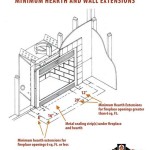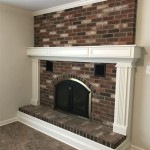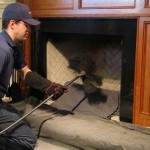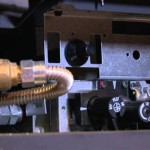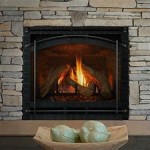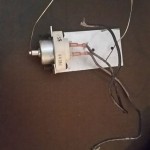Paint Brick Fireplace Before After: A Comprehensive Guide
Brick fireplaces, once considered a design centerpiece, can sometimes appear dated or clash with evolving interior design aesthetics. Painting a brick fireplace offers a relatively affordable and impactful way to modernize the space and integrate it seamlessly into a home's overall decor. This article explores the process of painting a brick fireplace, highlighting before and after transformation possibilities, essential preparation steps, appropriate paint selection, and meticulous application techniques.
Before embarking on a painting project, a careful evaluation of the existing fireplace and its surroundings is crucial. Consider the current style of the room and the desired aesthetic. Look at the color of the walls, flooring, and furniture. Is the goal to create a focal point, or to blend the fireplace more subtly into the background? The answers to these questions will guide the choice of paint color and finish.
Many find that the raw, unpainted brick look clashes with their modern taste. This can leave the impression that a brick fireplace is dark, dingy, or outdated. By looking at before and after examples, homeowners can visualize a dramatic shift from a traditional, rustic ambiance to a more contemporary and streamlined appearance. The transformation can elevate the entire room, bringing it into line with current design trends.
While the aesthetic benefits of painting a brick fireplace are significant, it is essential to acknowledge potential downsides. Once painted, reverting to the original brick appearance is a difficult and labor-intensive process, often involving chemical strippers and abrasive techniques. Therefore, making an informed decision and choosing a color and finish that aligns with long-term design preferences is paramount.
Preparing the Brick Fireplace for Painting: A Critical First Step
Successful painting hinges on thorough preparation. Neglecting this stage can lead to poor adhesion, uneven finish, and ultimately, a less-than-satisfactory outcome. The preparation process involves cleaning, repairing, and priming the brick surface.
The first step in preparation is a thorough cleaning. Over time, brick fireplaces accumulate soot, dust, and grime. A wire brush and a solution of trisodium phosphate (TSP) and water are effective for removing these contaminants. Stiff scrubbing will be necessary to loosen stubborn deposits. Rinse the brick thoroughly after scrubbing to remove any residual TSP. TSP is a powerful cleaner, but it's important to wear gloves and eye protection when using it and to follow the manufacturer's instructions carefully. Allow the brick to dry completely, which can take several days, depending on the humidity and ventilation.
Inspect the brick for any cracks or damage. Small cracks can be filled with a masonry patching compound. Larger cracks may require professional repair to ensure the structural integrity of the fireplace. Mortar joints should also be inspected and repaired if necessary. Loose or crumbling mortar can be removed and replaced with fresh mortar. This step is crucial, as it provides a smooth, even surface for painting and prevents moisture from seeping behind the paint, which could cause it to peel or blister.
Once the brick is clean and repaired, applying a primer is essential. Primer serves several purposes. It seals the porous brick surface, preventing the paint from being absorbed unevenly. It also provides a better surface for the paint to adhere to, improving its durability and longevity. Choose a high-quality masonry primer specifically designed for brick. Apply the primer evenly, using a brush or roller, ensuring to reach all the nooks and crannies of the brick surface. Allow the primer to dry completely before proceeding with painting, following the manufacturer’s recommended drying time.
Selecting the Right Paint for Brick Fireplaces: Balancing Aesthetics and Functionality
The type of paint used on a brick fireplace significantly impacts its appearance, durability, and resistance to heat and moisture. Choosing the appropriate paint is crucial for achieving a long-lasting and aesthetically pleasing result.
Latex paint is a popular choice for brick fireplaces due to its durability, ease of application, and wide range of colors. Latex paint is also relatively low in fumes and cleans up easily with water. However, it's important to choose a high-quality latex paint specifically formulated for masonry surfaces. These paints typically contain additives that improve their adhesion, flexibility, and resistance to moisture and mildew.
Another option is mineral paint, which is a type of paint that is made from natural minerals such as lime or silicate. Mineral paints are highly breathable, allowing moisture to escape from the brick, which helps to prevent peeling and blistering. They also have a naturally matte finish, which can create a sophisticated and understated look. Mineral paints are more expensive than latex paints, but they offer excellent durability and are a good choice for older brick fireplaces that may be prone to moisture problems.
Consider the type of finish when selecting paint. Matte finishes are generally preferred for brick fireplaces, as they tend to hide imperfections and create a more subtle and elegant look. Semi-gloss or gloss finishes can be used to create a more dramatic and eye-catching effect, but they also tend to highlight any imperfections in the brick surface. The choice of finish depends on the desired aesthetic and the overall design of the room.
Heat-resistant paints are generally unnecessary for the exterior of a fireplace, unless the fireplace gets unusually hot. However, if painting the firebox, using specialized high-temperature paint designed for fireboxes is essential. Regular paint will blister, peel, and emit harmful fumes when exposed to high heat. These paints are formulated to withstand extreme temperatures without breaking down.
Achieving a Professional Finish: Painting Techniques and Considerations
The application method plays a crucial role in achieving a professional-looking painted brick fireplace. Proper techniques will ensure that the paint is applied evenly, adheres well, and creates a durable and visually appealing finish.
Begin by using painter’s tape to protect the surrounding areas, such as the wall, mantel, and hearth. This will prevent paint from accidentally getting on these surfaces and will ensure clean, sharp lines. Use a high-quality painter’s tape that is designed for use on delicate surfaces. Apply the tape carefully, pressing it firmly against the surface to create a tight seal.
Use a combination of brushes and rollers to apply the paint. A brush is ideal for reaching the nooks and crannies of the brick surface and for creating a textured finish. A roller is useful for applying paint to larger, flat surfaces. Use a high-quality brush with synthetic bristles, as natural bristles can absorb water and become floppy. Choose a roller with a nap that is appropriate for the texture of the brick. A thicker nap is better for rough surfaces, while a thinner nap is better for smooth surfaces.
Apply the paint in thin, even coats. Avoid applying too much paint at once, as this can lead to drips and uneven coverage. Work in small sections, using a brush to apply paint to the mortar joints and then using a roller to apply paint to the brick surface. Overlap each stroke slightly to ensure complete coverage. Allow each coat of paint to dry completely before applying the next coat. This will typically take several hours, depending on the humidity and temperature. Applying multiple thin coats is better than applying one thick coat, as it will create a more durable and even finish.
After the paint has dried completely, remove the painter’s tape carefully. Pull the tape away from the painted surface at a 45-degree angle to prevent the paint from chipping. Touch up any areas where the paint has chipped or peeled. Use a small brush to apply a thin coat of paint to these areas. Allow the touch-up paint to dry completely before using the fireplace.
Consider the desired final aesthetic. Some homeowners prefer a perfectly smooth, uniform finish, while others prefer a more textured or distressed look. A distressed look can be achieved by sanding the paint lightly after it has dried, exposing some of the underlying brick. This can create a more rustic and aged appearance. Another technique is to use a dry brush to apply paint to certain areas, creating a subtle and textured effect. Experimenting with different techniques can help to achieve the desired look.
Maintaining a painted brick fireplace is relatively simple. Wipe down the surface regularly with a damp cloth to remove dust and dirt. Avoid using harsh chemicals or abrasive cleaners, as these can damage the paint. Touch up any areas where the paint has chipped or peeled. With proper care, a painted brick fireplace can retain its beauty and elegance for many years to come.

Before After Brick Anew Fireplace Paint

How To Paint Your Brick Fireplace Katie Lamb

Painting Brick Fireplace White A Renovation Story

Paint Fireplace Brick

Brick Fireplace Makeover Before And After Decorating Painting Id Painted Fireplaces Paint

How To Paint Your Fireplace Brick Surround

How To Paint A Brick Fireplace

Fireplace Decorating My Brick Painted Is Stunning Paint Makeover Red Fireplaces

How To Paint A Brick Fireplace And Mantle

How To Paint A Brick Fireplace
Related Posts

